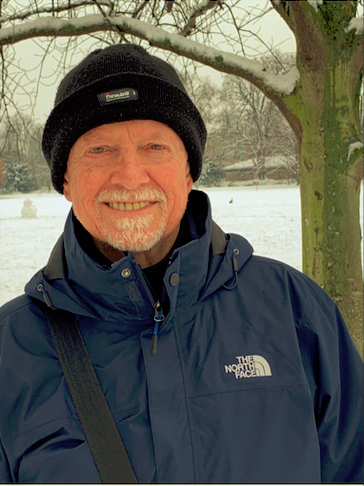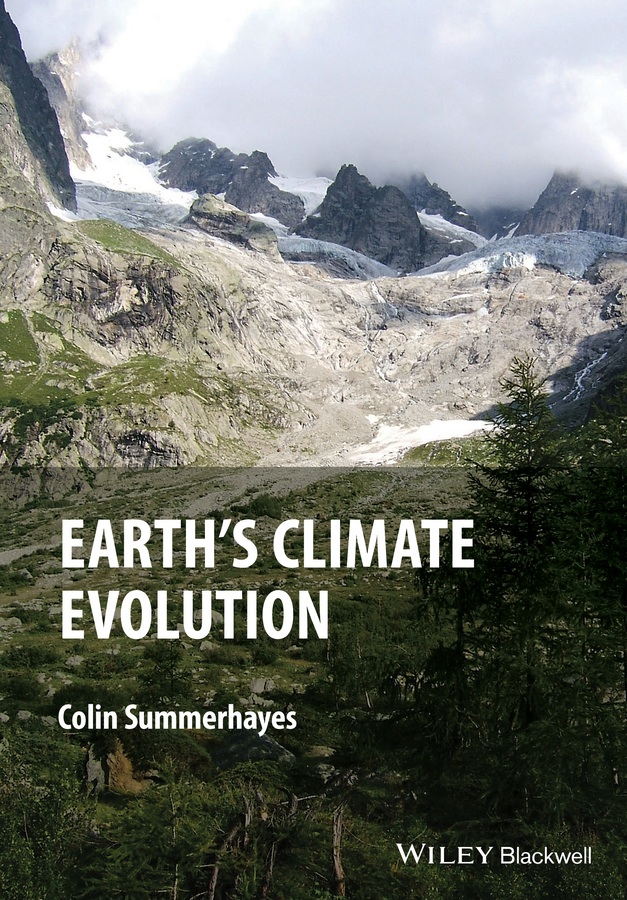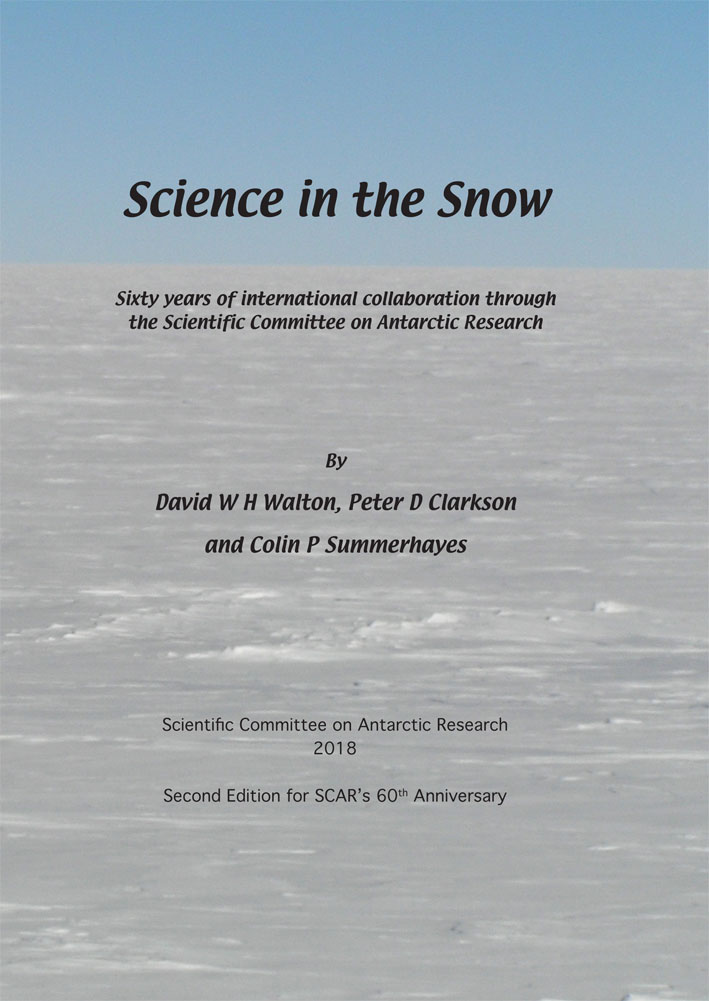About Colin

Dr Colin Summerhayes is an Emeritus Associate in Cambridge University’s Scott Polar Research Institute (SPRI). He is also a former Director of the UK’s Institute of Oceanographic Sciences Deacon Laboratory (IOSDL).
Colin has spent over a year at sea studying aspects of climate change on multiple research cruises around the world, along with 6 visits to different parts of Antarctica, several trips to the Arctic, and several visits to the icy parts of the world’s mountain ranges.
He has also worked as a marine scientist for the New Zealand Oceanographic Institute, the University of Cape Town, the Woods Hole Oceanographic Institution, Exxon Production Research Co and BP Research Co, and UNESCO’s Intergovernmental Oceanographic Commission.
Colin has published several books and numerous scientific journal articles on climate change.
Colin also gives talks on various topics, including the oceans, climate change, energy, our use of energy, and others. You can contact him through the contact form for a list of lectures.
- Deputy Director of the Southampton Oceanography Centre (now the National Oceanography Centre)
- Director of the Global Ocean Observing System (GOOS), co-sponsored by UNESCO’s Intergovernmental Oceanographic Commission, the World Meteorological Organization, the UN Environment Program and the International Science Council
- Member of the Steering Committee for the Global Climate Observing System (GCOS)
- First Executive Director of the Scientific Committee on Antarctic Research (SCAR)
- Member of the Anthropocene Working Group of the Sub-commission on Quaternary Stratigraphy
- Member of Deep Sea Drilling Project’s Advisory Panel on Organic Geochemistry
- Chair of the Panel on Improved Ocean Bathymetry for the Scientific Committee on Oceanic Research
- Visiting Prof in Geological Sciences for University College London
- President of Society for Underwater Technology
- Vice President of the Geological Society of London (GSL)
- Chair of the GSL’s Climate Change Drafting Group
- Chaired the International Advisory Board for the International Arctic Science Committee (IASC)
- Chaired the International Advisory Board for the Korean Polar Research Institute (KOPRI)
- Visiting Erskine Fellow for Canterbury University, NZ
Studies and Interests
Colin studied Geology and Geochemistry at University College London, Oxford University, Imperial College London, and Victoria University in Wellington, New Zealand. He holds a PhD in Geochemistry, a Masters and Doctor of Science degree in Geology.
Colin also happens to be a champion green lawn bowler and he loves the New York Times Sunday crossword and Wordle. Colin is also a past president of the Houston Audubon Society. He is a keen bird-watcher and has published 3 scientific papers on the seabirds of the southern oceans. He is probably the only geologist ever to have been bitten by an albatross.
Summerhayes Inlet on the east coast of the Antarctic Peninsula is named after him.
F.A.Q.
Here are the 5 questions Colin gets asked the most.
Listen to his Climate Pulse Podcast for more questions and answers.
Basic answer: Observations show that over the past 100 years, our planet has become hotter. Most of this increase in heat is trapped in the world’s oceans. The increase in air and ocean temperature is melting ice at the Poles and anywhere else there is lots of ice and snow. This creates the rise in sea levels you hear about on the news.
Detailed answer: Global average surface temperatures have increased by 1.2ºC since the late 19th century. Over land they have increased by 1.9ºC, and in the surface ocean by 0.8ºC. 90% of the heat of global warming is trapped in the ocean, where it is gradually penetrating to depths of 2000m or more. The warming is shrinking glaciers; the Greenland and West Antarctic Ice Sheets are losing mass; and Arctic summer sea ice has shrunk by 40% in area and 70% in volume. As the warming ocean expands, and land ice melts, sea level is rising at progressively faster rates, now approaching 5mm/year.
Basic answer: Without methane, carbon dioxide and water vapour in the atmosphere, our planet would be covered in ice. Humans are affecting the natural balance of these Greenhouse Gases in the air by burning lots of fossil fuels, chopping down forests and creating massive farming areas for cattle and their feed crops. These activities increase the warming effect those gases have on the planet, and temperatures therefore rise.
Detailed answer: Greenhouse gases, which are mostly water vapour, carbon dioxide (CO2), and methane (CH4), keep the planet warm naturally; without them, Earth would be covered in ice. Human activities are exacerbating this natural effect through the burning of fossil fuel, deforestation, and industrial-scale agriculture, which supply extra carbon dioxide and methane. As a side effect, a warming of 1ºC causes 7% more water vapour to evaporate from the ocean, creating further warming (a positive feedback). More than 90% of all the fossil fuel ever burnt was burned since 1950, which accounts for recent warming.
Basic answer: The Sun heats our planet. Like most things in Nature, it has a cyclical rhythm i.e. it gets hotter sometimes and cooler at other times. These cycles create times like the Medieval Warm Period (1000 CE) and the Little Ice Age (1600s CE). The Sun is hotter when there are more sunspots and cooler when there are fewer. There were quite a few sunspots in 1980-90, which added to the warming caused by human activities. Since then, the number of sunspots has gone down, so the Earth should have been cooling since that time. Quite the opposite has happened, with warming continuing due to the increases in Greenhouse Gases.
Detailed answer: The Sun is a major driver of our climate, and its output has very slowly increased by 30% over the past 4 billion years. Its behaviour is cyclic, with notable peaks at intervals of 2300, 208, 88 and 11 years. These have led to alternating periods of mild warming and cooling over the past 10,000 years, including the Medieval Warm Period centred on about 1000CE and the Little Ice Age centred on about 1600CE. The climate is warm when sunspots are abundant. They were equally abundant in the 1780s, the 1860s and 1980-90, but due to carbon emissions temperatures were substantially higher in 1980-90 than in the earlier periods.
Basic answer: The Earth’s climate changes very slowly over the eons of geological time due to the natural emissions of carbon dioxide by volcanos and its absorption by weathering of minerals in new mountain ranges. The Earth’s orbit around the Sun also changes over periods of thousands of years, affecting the amount of heat the Earth receives. These long, slow and gradual changes dictate whether Earth’s. climate is in a warm phase, or in a cool one with ice at the poles. For the past 10,000 years Earth has been in a warm phase characterised by gradual cooling. Emissions of Greenhouse Gases from human activities have reversed this latest cooling.
Detailed answer: For most of the past 500 million years the climate has slowly oscillated between 28ºC and 18ºC, with occasional descents into glacial conditions with ice at one or both poles (e.g. 440 and 300 million years ago and for the past 34 million years). Much of the control of climate over long timescales is driven by large-scale Earth processes (plate tectonics) leading to the emission of carbon dioxide by volcanoes (a CO2 source) alternating with the chemical weathering of minerals in newly formed mountain ranges (a CO2 sink). At much finer time-scales the Earth’s orbit around the Sun, the tilt of the Earth’s axis, and the slow migration of the Earth around its orbit lead to regular warmings and coolings at intervals of roughly 100,000, 40,000 and 20,000 years. During glacial periods these regular coolings led to glacial maxima while the regular warmings led to warm interglacial periods like that of the past 10000 years. We are currently in the cooling phase of this latest interglacial.
Basic answer: Climate scientists have been studying the changes in climate and global temperatures for decades. The trends in the data they collect confirm that Earth is getting warmer and sea levels are continuing to rise. They advise that to prevent global warming from creating serious social and economic problems it would be wise to stop the business-as-usual emission of Greenhouse Gases from the burning of fossil fuels, and to start removing excess carbon dioxide from the air. If that is not done, they estimate that by 2100 there will be globally averaged rises of sea level by 1.5-2m and of temperature by 2.7°C. Despite this advice, governments are doing very little to stop emissions from continuing to grow.
Detailed answer: Given the association between greenhouse gases and temperature, fist discovered in the mid 1850s, climate scientists are confident that if emissions of carbon dioxide and methane continue, our climate will warm further (not least because of the further increase in water vapour, and the further decrease in the area of sea ice – which reflects solar energy and thus helps to cool the planet). Given current plans by governments around the world, it seems highly likely that global average temperatures will rise to 2.7ºC by 2100. That translates to about 8ºC in the Arctic, the melting of large volumes of Arctic and Antarctic ice, and the raising of sea level to between 1.5m and 2.0m above 1900 levels. Stopping further emissions now will stabilize current warmth, which will continue to melt progressively more ice, contributing to further sea level rise. To combat that, we must actively remove the excess CO2 and CH4 from the atmosphere.
Articles, interviews and lectures for scientific readers:
Colin’s more detailed career profile on the SPRI website
Colin’s guest post on the London Geological Society blog (2015): Earth’s Climate Evolution – a Geological Perspective on Climate Change
Colin’s interview on climate and health in the bulletin of the WHO (2010): Climate Change – a creeping catastrophe
Colin’s co-authored article on the blog of the European Geosciences Union:
How humans are influencing climate change and its significance in defining a new geological epoch: the Anthropocene
Colin’s co-authored, most cited scientific paper on the risk of passing the threshold at which the planet can no longer stabilise its climate. This situation is of grave concern to the scientific community. Trajectories of the Earth System in the Anthropocene
Read Colin’s books for in-depth coverage of the science. His latest book ‘The Icy Planet‘ is aimed at the general public.









